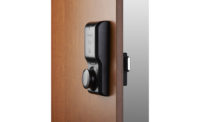How Mobile Credentials Can Combat Supply Shortages & Help Customers
.jpg?1660659006)
According to a recently released report by HID Global, “The 2022 State of Access Control Report,” there has been an increase of interest in mobile credentials — in large part as a result of the pandemic. While the study cites the convenience factor of mobile credentials, with 42 percent of respondents saying they plan to upgrade to mobile-ready systems, security dealers and integrators may want to consider steering customers in the mobile credential direction for other reasons as well.
The number one frustration amongst security dealers and integrators — as cited over and over again on the recent SDM 100 and Top Systems Integrators Report — is supply chain shortages. Chips and card readers are a couple of security technologies frequently mentioned as being hard to get. But in certain situations mobile credentials might be able to help circumvent this challenge.
Even pre-pandemic the march to mobile credentials was on, and more and more end users were demanding mobile-ready readers as a way to future-proof their installations. Logistical issues of personal phones versus company-provided ones, dead batteries and so forth were often cited as a reason for a slower adoption of full mobile credential solutions, but often there was a mix of cards and mobile credentials. The C-Suite, for example, particularly liked the convenience of being able to use their phones instead of pulling out a credential.
But today, like so many other things with the pandemic, there has been a reset of attitudes and expectations.
Now, end users are more willing than ever to consider mobile solutions. In part this is a result of seeing first-hand the convenience of both mobile and cloud-based solutions when offices were shut down or pared down for hybrid work. But another plus in mobile’s favor is the pandemic-fueled trend to touchless solutions in access control.
While many mobile credentials aren’t technically “touchless,” they involve only touching something that already belongs to you. And they also have the capability of integration with other touchless technologies such as biometrics — some, for example, allow the user to use dual authentication by using facial recognition on their phone to unlock the mobile credential.
The HID study found about 32 percent of respondents said they would upgrade systems to introduce touchless solutions as a result of the pandemic, with contactless biometrics also being cited.
All things considered, mobile credentials have the potential of solving several pain points at once, and customers are now more knowledgeable and interested than they were just a few short years ago.
For those customers who had the forethought to install mobile-ready readers, perhaps now is the time to reach back to them and suggest moving forward with that capability. And for others just starting on this journey, the benefits are even greater than before.
Looking for a reprint of this article?
From high-res PDFs to custom plaques, order your copy today!







